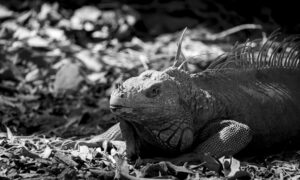Some organic compounds have been found in previous exploration studies on Mars. So where did these organic compounds Curiosity discovered come from?
One of the most intriguing scenarios is that thiophene, one of these organic compounds, may have been created by ancient microbial life, according to a new study. Thiophene molecules; It is formed by 4 carbons, 4 hydrogens and a sulfur atom making a quintuple ring.
Thiophene in the world; It is found in coal, crude oil, and even white truffles. Here’s how NASA’s Curiosity rover came across thiophene while drilling on the red planet a few years ago.
So could these compounds be a sign that there was once life on Mars? Thiophene could point to life on Mars a few billion years ago, according to new research published by researchers from Washington State University and the Berlin University of Technology.
“We have identified several biological rather than chemical pathways in thiophenes, but we still need evidence. If we found these thiophenes on Earth, we might think they’re biological, but we need to raise the bar a little bit to prove it on Mars,” says Dirk Schulze-Makuch.
Thiophenes are generally formed by sulfate reduction reactions and these reactions can be triggered in a number of ways. This can be achieved by the thermochemical process, that is, by heating the precursor compounds to 120°C to obtain thiophene. Such conditions can be achieved by meteorite collisions on Mars.
Bacteria Can Easily Produce Thiophene But the researchers note that bacteria can also do sulfate reduction under milder conditions. A few billion years ago, Mars is thought to have been much more habitable than it is today. It was a planet with a thicker atmosphere, a milder climate, and plenty of water. In such an environment, the possibilities of producing thiophene by bacteria similar to those on Earth are being discussed.
However, this simple scenario still cannot prove that there is life on Mars or that there was life before. If these thiophenes are indeed produced by organisms, the carbon and sulfur atoms must contain completely different isotopes than non-biological productions.
But since the Curiosity rover doesn’t have equipment to show isotope differences, it’s up to future Mars rovers. For example, the Mars Organic Molecule Analyzer (MOMA) on ESA’s Rosalind Franklin rover, due to launch in July, can analyze larger molecules and isotope difference










